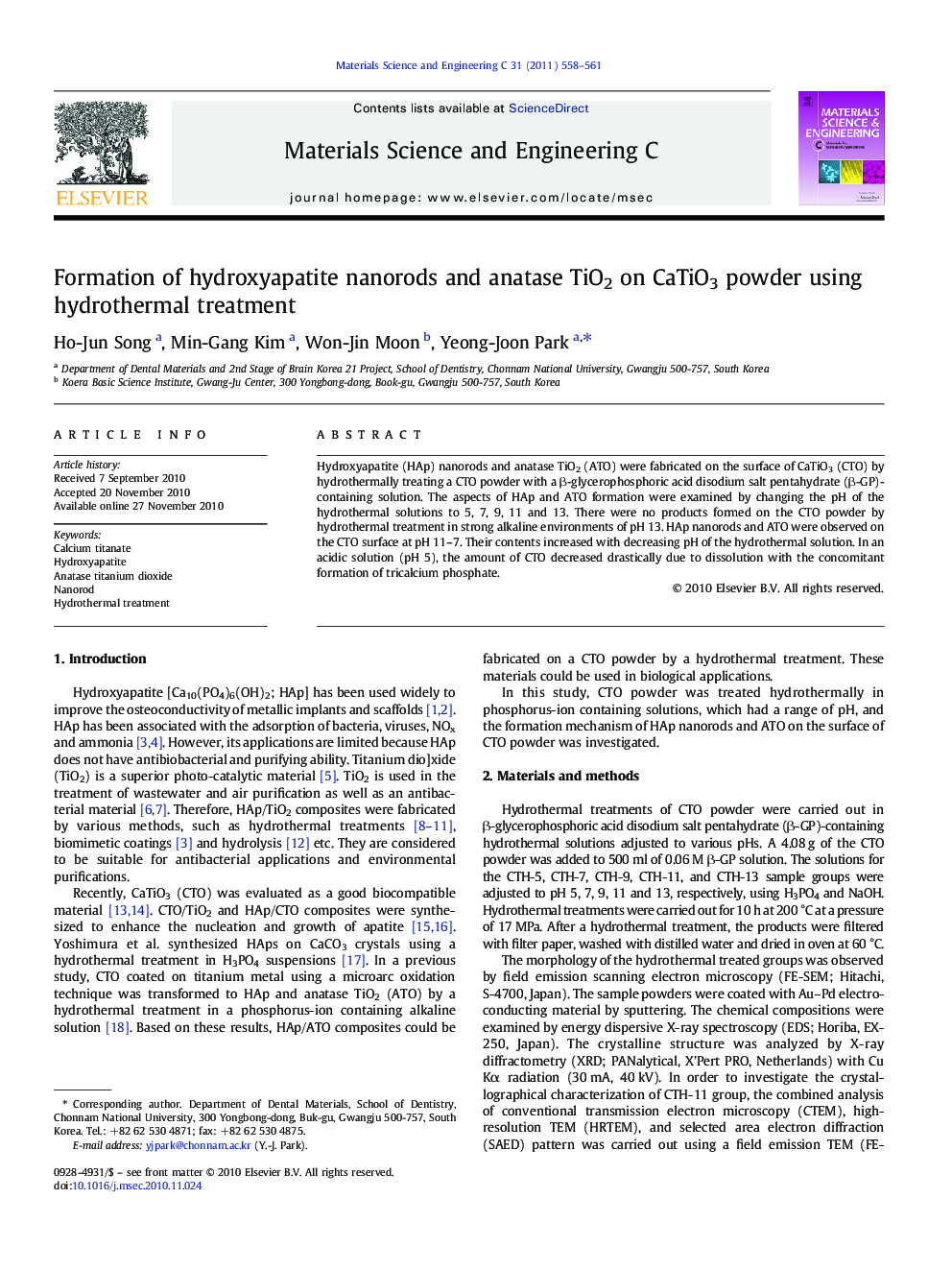| Article ID | Journal | Published Year | Pages | File Type |
|---|---|---|---|---|
| 10614863 | Materials Science and Engineering: C | 2011 | 4 Pages |
Abstract
Hydroxyapatite (HAp) nanorods and anatase TiO2 (ATO) were fabricated on the surface of CaTiO3 (CTO) by hydrothermally treating a CTO powder with a β-glycerophosphoric acid disodium salt pentahydrate (β-GP)-containing solution. The aspects of HAp and ATO formation were examined by changing the pH of the hydrothermal solutions to 5, 7, 9, 11 and 13. There were no products formed on the CTO powder by hydrothermal treatment in strong alkaline environments of pH 13. HAp nanorods and ATO were observed on the CTO surface at pH 11-7. Their contents increased with decreasing pH of the hydrothermal solution. In an acidic solution (pH 5), the amount of CTO decreased drastically due to dissolution with the concomitant formation of tricalcium phosphate.
Related Topics
Physical Sciences and Engineering
Materials Science
Biomaterials
Authors
Ho-Jun Song, Min-Gang Kim, Won-Jin Moon, Yeong-Joon Park,
